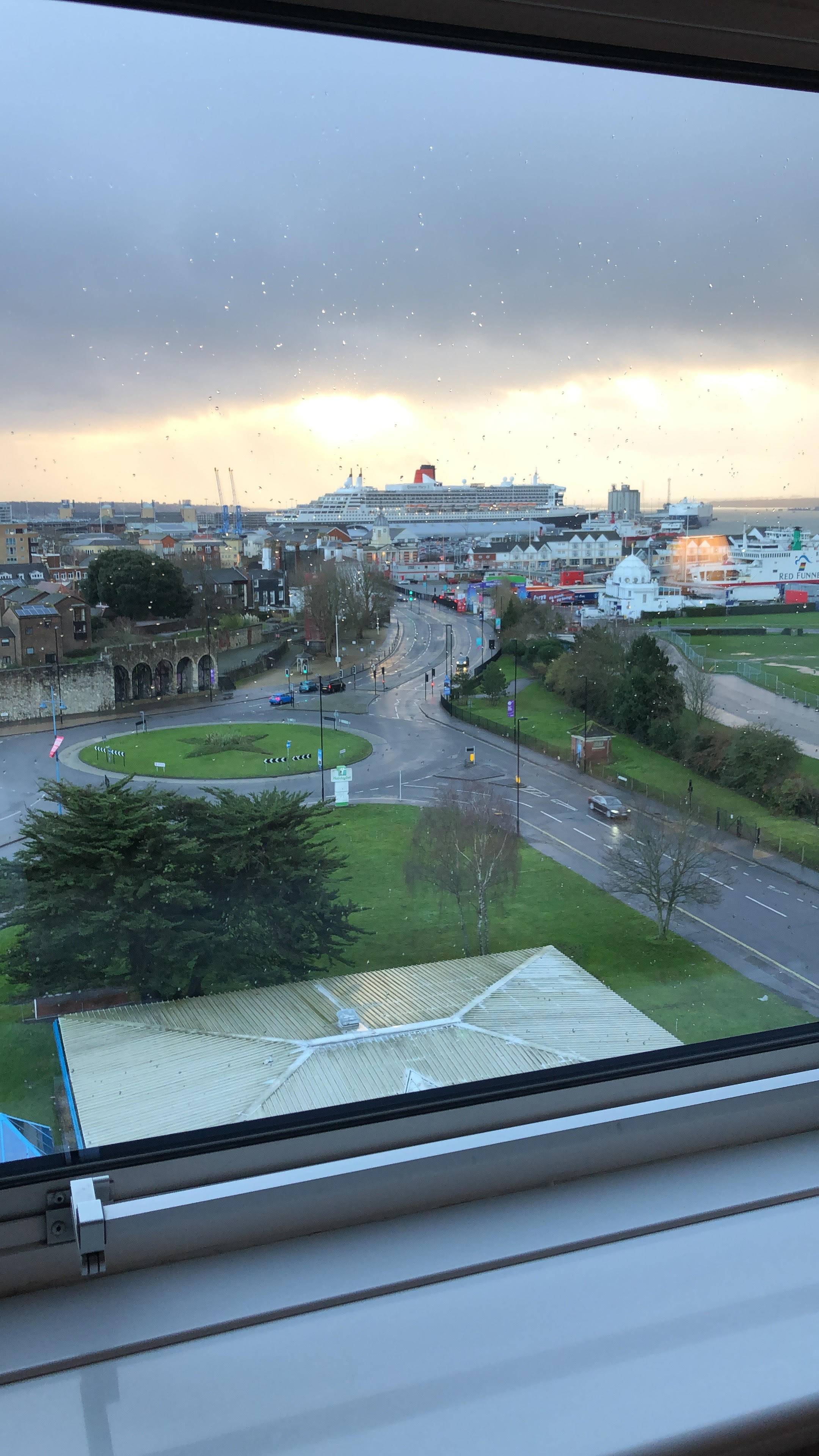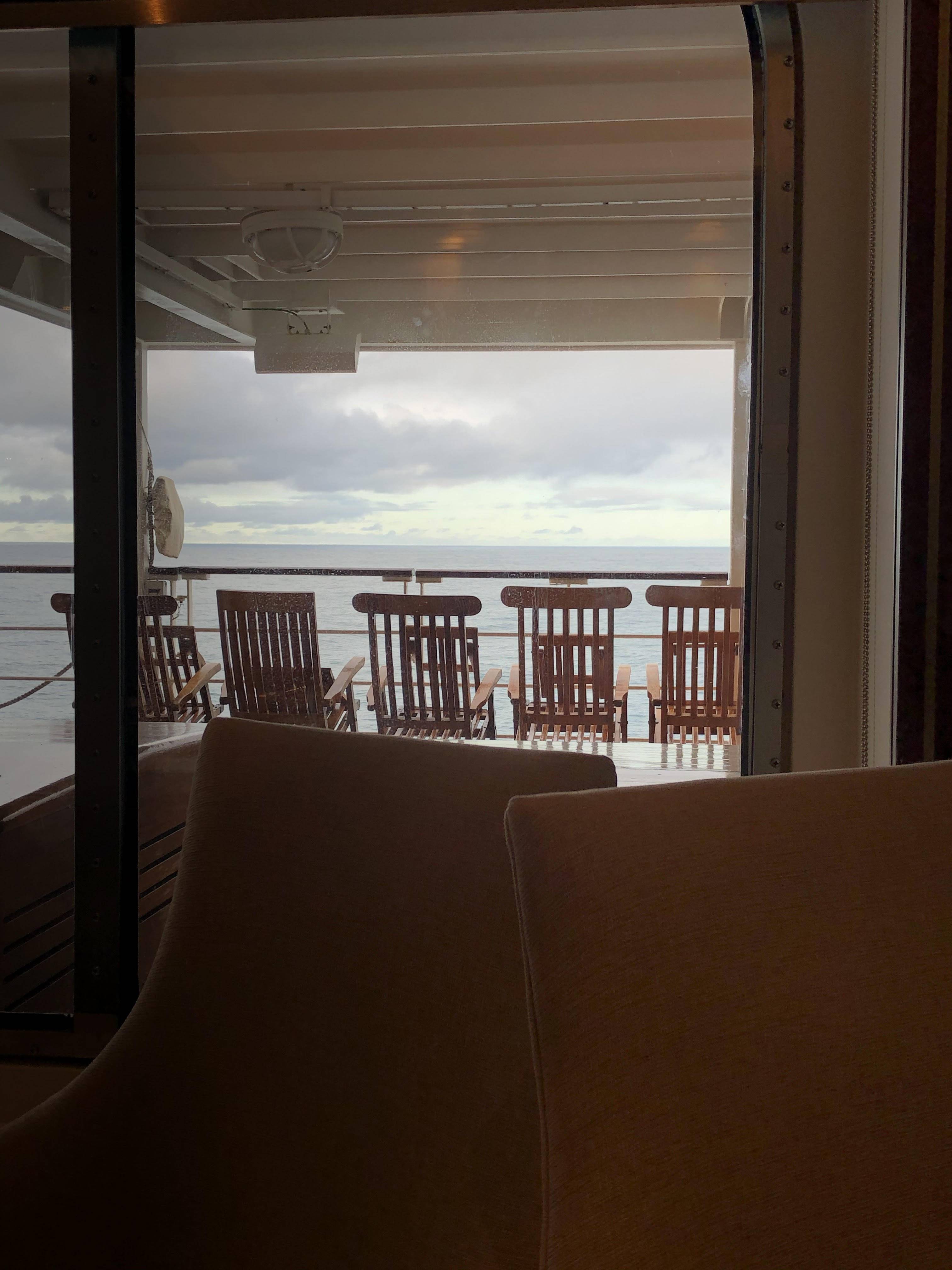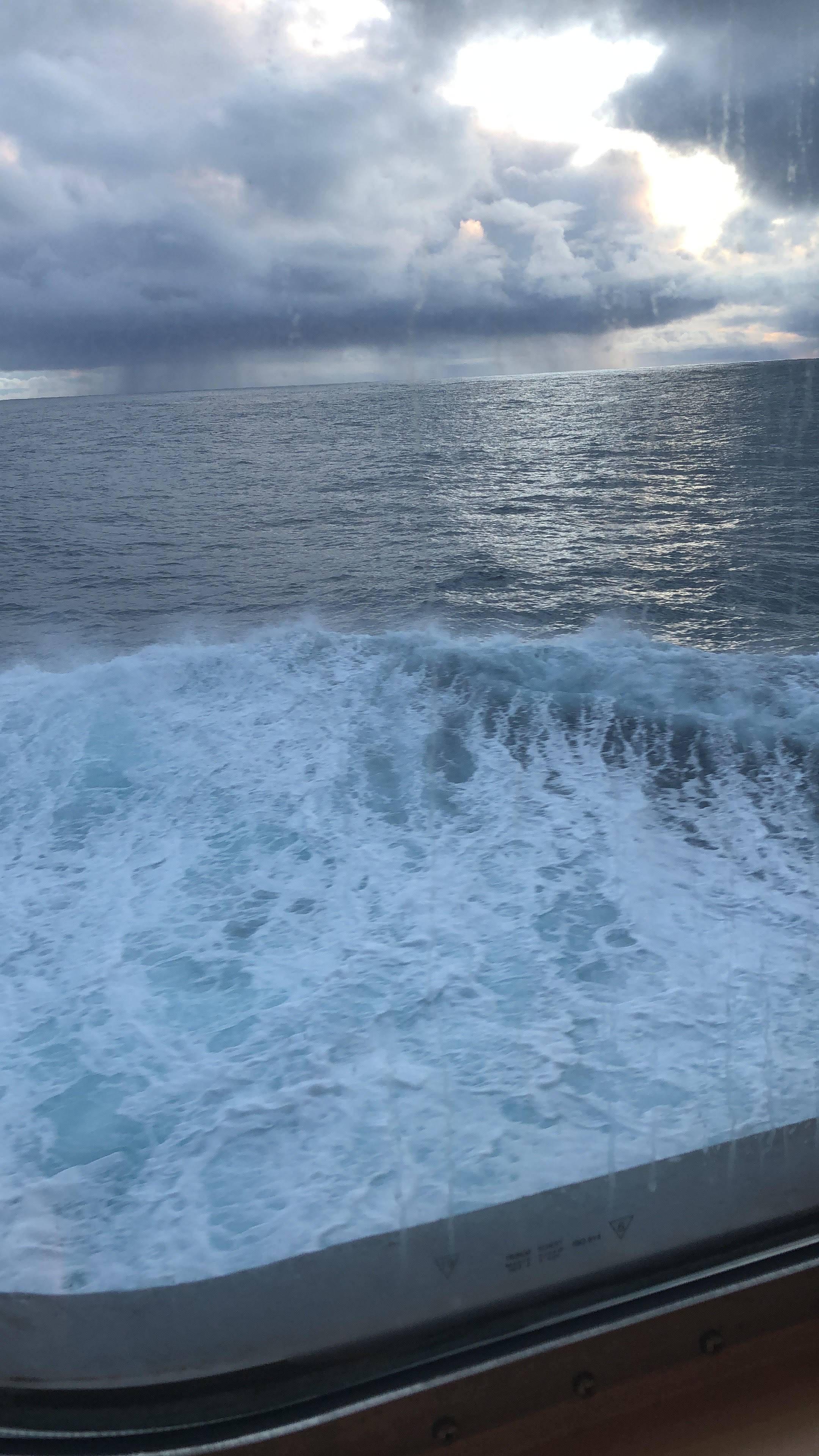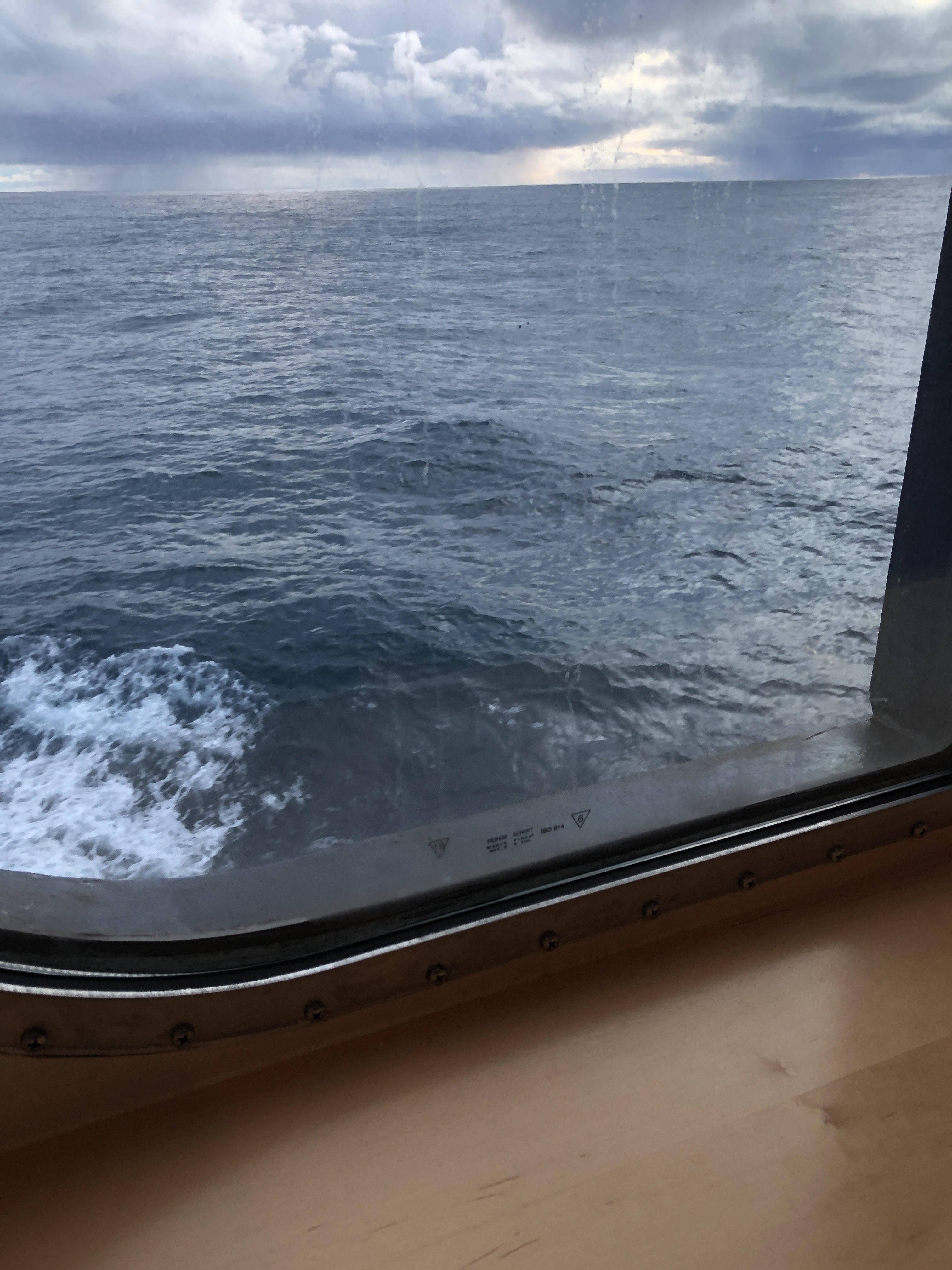For my AMS project, I explored the legendary Queen Mary 2 ship on its August 18th-August 25th voyage and its December 15th to 22nd voyage. On both voyages, I interviewed passengers and employees to learn more about why more people are choosing to travel on cruise ships. I asked a series of questions including who chooses to cruise, why specifically the Queen Mary 2, and who chooses to work on a cruise ship. I also compared the answers of summer and winter passengers to note any differences. By doing so, I hope to understand a little more about how cruise ships function as a business and why there is an uptick in the demand for cruise ships worldwide.
Cruise lines are one of the major economic growth areas in international tourism. Cruise tourism began in the 1960s with the decline of transoceanic travel and the establishment of non-stop air travel from the USA to Europe (Keeling, 2012). In the last five years, the cruise ship industry has grown 20.5% (The Florida Caribbean Cruise Association, 2018). In the Caribbean region, arrivals have jumped from 3 to 27 million in just over three decades (Keeling, 2012). In fact, 40% of all cruise beds have the Caribbean as a final destination(Keeling, 2012). However, transatlantic cruises remain 8% of the cruise geological destinations (Keeling, 2012). Today, common destinations include the Caribbean, Mediterranean, Alaska, Panama, West Mexico, and Northern Europe (The Florida Caribbean Cruise Association, 2018). The trips increase consumption and decrease unemployment for all associated parties. Thus cruise have a positive effect on economies (Dwyer & Forsyth, 1998). Even though cruise passengers spend about 30% of what land tourist would, they are involved in direct and indirect purchases in their destination economy (Keeling, 2012). The packages are cheap and are aimed to attract young, active tourists to a ship filled with activities meant to be the main tourist attraction (tourists often spend 50% of their budget on the cruise ship alone) (Keeling, 2012).
The Queen Mary 2 is a transatlantic ocean liner and as of 2019, it is the only passenger ship operating as an ocean liner (Cunard, n.d.). While it functions similar to a cruise ship, the Queen Mary 2 does not stop in ports along the way. Instead, its goal is simple: cross the Atlantic Ocean. This ship’s amenities include fifteen restaurants and bars, five swimming pools, a casino, a ballroom, and the first planetarium at sea (Cunard, n.d.). The ship is owned by the Cunard line who built the Queen Mary 2 to replace the Queen Elizabeth 2 in 2004 (Cunard, n.d.). It held around 2,650 guest each way in August and December along with almost 1,300 crew members (Cunard, n.d.).
Using a standardized survey sheet (one specific for passengers and one specific for employees), I aimed to understand why specific passengers choose to travel by boat for seven days instead of flying for several hours. Additionally, I set out to find why the Cruise ship industry is booming now more than ever by engaging in an open dialogue with actual customers and employees who are willing to forgo accelerated travel alternatives. Here are the results.
Passengers
To collect the maximum amount of surveys without taking away from passenger cruise experience, I recruited in the lounges, among those that were ocean watching, and those I shared a meal with. I found interviewing people during a lull in their day resulted in the most positive response to the study. Passengers who were walking and were out and about were less likely to be recruited. Because of this, the data is skewed towards older generations who were more likely to be found sitting in places throughout the ship. Younger people and families who may be more active were harder to recruit and obtain responses from. I recruited 102 summer passengers and 100 winter passengers for the survey.
Age
Age remained similar across both seasons. The most common age bracket was 60-70 (Figure 1,2). The summer cohort had more older passengers (over 80) and young passengers (under 20). I observed that many passengers were retired. It seemed as though they had the time to cruise that younger ages often lack. Several passengers also pointed out to me that cruising is sometimes cheaper than a retirement home, especially when they are frequent customers
Figure 1. Summer Passenger Age Breakdown
Figure 2. Winter Passenger Age Breakdown
Country of Origin
Country of Origin revealed some key differences between passengers on the summer and winter cruises. In the summer, I met many Australians who explained to me they were offered a good deal from an advertisement of several cruise ships including the Queen Mary 2 specifically targeting Australians. Conversely, in the winter, I did not meet anyone from Australia. Usually, this cruise ship is predominantly filled with British passengers, however in the summer, there was a great more deal of Americans (Figure 3.). The winter showed a more typical British majority with much fewer Americans (Figure 4.). Additionally, the winter attracted a greater deal of non-US/UK dwellers who travelled specifically to be on the cruise. Different countries may be targeted by Cunard based on their preferences. Americans may prefer to sail in the warmer months and chose not to in the winter. In the colder months, a transatlantic voyage is less attractive, so Cunard cuts the prices and attracts those willing to try something new and willing to travel further to be on the ship. In the summer, the price is more expensive, so those who face fewer travel costs make up the majority of the passenger population.
Figure 3. Summer Passenger Country of Origin
Figure 4. Winter Passenger Country of Origin
Highest Educational Level Achieved
Education level was somewhat similar across the passengers of both seasons. It was a broad range to include less than high school to as much as a doctoral degree. Interestingly enough, the summer passengers mostly possessed bachelor’s degrees (Figure 5.). The majority of winter passengers were evenly in possession of either a master’s or bachelor’s degree (Figure 6.). In the winter, fewer passengers possessed doctoral degrees and more passengers had less than an associate degree education. While the correlation between income and educational level is not perfect. It is a subtle way to get a glimpse at the income and class levels of the passenger populations. It makes sense that in the winter when Cunard is known to cut their prices for colder voyages, those with a lower education level would make up a larger portion of the passenger population.
Figure 5. Summer Passenger
Figure 6. Winter Passenger
Race and Diversity
The racial diversity was larger in the winter passenger cohort. There were more races present and they made up a larger minority in the passenger population than in the summer passenger cohort. Those who identified as Hispanic or Latino was also greater in the winter population. Overall, the majority who choose to cruise the Queen Mary 2 identify as Caucasian.
Figure 7. Summer Passenger Racial Breakdown
Figure 8. Winter Passenger Racial Breakdown
Figure 9. Summer Passenger Hispanic/Latino Prevalence
Figure 10. Winter Passenger Hispanic/Latino Prevalence
Why Queen Mary 2?
The first question asks why passenger choose to book a trip on the Queen Mary 2. The following answers were then grouped into five categories. I decided that if anyone reported an answer having to do with experiencing any of the cruise activities on board it qualified in the ‘seeking a cruise experience’ category. This could be simply watching the Atlantic Ocean or experiencing the ballroom. Vacation themed answers included those who used the cruise as a vacation or vacationed on it because a family member wanted to do so. Avoiding flying was any answer that mentioned a dislike or inability toward flying. A answer was classified as relaxation if it focused on the relaxing aspect of cruising. Any answer that mentioned being satisfied with the price went into the good price category. When answers overlapped on these categories, the first reason listed was used. Winter passengers seemed motivate to cruise on the Queen Mary 2 for the experience. Almost half of them reported seeking a cruise experience (Table 2.). Meanwhile, the summer passengers motives were more spread out with a majority of them doing so to relax, avoid flying, and vacation (Table 1.). In the eyes of the passengers, a summer cruise is a time to vacation, while a winter cruise is a time to try something new. This may be because the winter prices were cheaper in the winter incentivizing many passengers to try cruising or transatlantic cruising for the first time. Instead of relaxing, the winter passengers want to make the most of their new experience. Summer passengers may be more experienced with the cruising and willing to spend more money to simply relax. The average amount of cruises attended by passengers did not support this hypothesis as summer passengers on average had been on 8.5 cruises while winter passengers had been on 10.9 cruises. However, a closer look at the data, reveals 15.7% of summer passengers were on their first cruise while 27% of winter passengers were on their first cruise. While those who cruise quite frequently inflated the winter passenger average, there were more first-time cruisers on the winter voyage.
|
Seeking a Cruise Experience |
17% |
|
Vacation |
23% |
|
Avoiding flying |
25% |
|
Relaxation |
29% |
|
Good Price |
6% |
|
Seeking a Cruise Experience |
44% |
|
Vacation |
28% |
|
Avoiding flying |
10% |
|
Relaxation |
11% |
|
Good Price |
7% |
Table 1. Summer Passenger
Why Cruise?
The survey then proceeded to ask why passengers got into cruising in the first place. Seeking a cruise experience included any answers that wanted to specifically experience what the ship had to offer. Vacation included any passengers wanting a way to vacation or family members that wanted a way to vacation. Avoiding flying meant any passengers who preferred cruising to flying when they were traveling. Relaxation referred to any answers mentioning relaxation. Good price referred to a good price that allured a passenger to try a cruise. Those who learned about cruising from previously working on a cruise line were grouped in the last category. Similar results were cleaved from that of why Queen Mary 2: winter passengers were looking for a new experience while summer passengers wanted a good way to relax (Table 3,4.). However, the winter passengers motives are almost equally spread out among seeking a new experience, vacationing, avoiding flying, and relaxation. On the other hand, the summer passengers’ majority heavily was motivated by the benefit of relaxation. This suggests a greater diversity in the winter passengers in why they choose to book a cruise as seen in the demographics discussed above.
|
Seeking a Cruise Experience |
9% |
|
Vacation |
17% |
|
Avoiding Flying |
22% |
|
Relaxation |
49% |
|
Good Price |
3% |
|
Worked for a Cruise Liner Previously |
1% |
|
Seeking a Cruise Experience |
26% |
|
Vacation |
23% |
|
Avoiding Flying |
22% |
|
Relaxation |
26% |
|
Good Price |
2% |
|
Worked for a Cruise Liner Previously |
1% |
Passenger Cruise Line Preference
Passengers were also asked to list a preferred cruise line if they had one and why. Of the 102 summer passengers surveyed, 54 had a preferred cruise line and 81.5% of them listed Cunard as their preferred cruise line. The great majority of these listed the service as the main reason why they preferred Cunard. Of the 100 winter passengers surveyed, 62 had a preferred cruise line of which 79% preferred Cunard. Similarly, the majority listed service as the main reason on why they preferred Cunard. This is not surprising as the Cunard brand focuses on providing ‘white-star service’ that other cruise lines may not be able to match. There is more loyalty to Cunard than I expected given it is the only major cruise ship that travels across the Atlantic Ocean. Passengers who wish to do such a voyage simply do not have much choice in options. However, the level of service appears to be the main reason for why passengers return than the voyage destination itself.
Passenger Conclusions
Surveying the passengers across both a summer and winter voyage revealed different motives and different passenger cohorts that range in levels of diversity. There is a clear difference between summer and winter passengers in their motives to travel on the Queen Mary 2. While summer passengers wanted to relax, winter passengers were more likely to be first-time cruisers who want to experience the cruise ship and all that it has to offer. This makes sense when seen in reference to the pricing strategy Cunard uses. Cunard charges ah higher price in the summer to its more loyal customers who prefer Cunard for its level of service and relaxation options. Those who are more curious about a cruise voyage and willing to go to in the winter are allured by the lower price. The increase in demand for cruise lines may be rooted not in its typical retired Caucasian passenger population, but in its more diverse population who jump at the opportunity to try a different kind of vacation at a discounted price.
Employees
Employees were recruited to participate in a way that would avoid disrupting their workdays. Those who worked at a bar, desk, or office were most likely to be recruited as they were easier to survey at a non-busy time during the day. Employees that worked in the kitchen, for example, were constantly working and preparing for service, so I found it impossible to find a good time to approach them. Overall, it was quite difficult to find a good time to recruit employees as they were often quite busy (a common difficulty they listed in their surveys). So, I was able to recruit 16 summer crew members and 15 winter crew members. Because of their long contracts, it did not make sense to compare the different season crew members as most of them worked both seasons. Instead, the data was combined to learn a little behind the motives of cruise ship employees and the circumstances they face.
Age
Not surprisingly, employees were confined to three age brackets with the majority being between 30-40 (Figure 11.). However, many studies have found that cruise ship employees are almost all under 35 (Jobs, 2018). At Cunard, this does not seem to be the case with many of the crew members I interviewed were actually around 35 and several over 40. This may be because the level of service on Cunard cruise lines is higher, so employees with more service experience are sought out.
Figure 11. Cruise Employee Age Breakdown
Country of Origin
The home countries of employees varied greatly among the employees interviewed. Over half were from Asia, and a good portion came from Eastern Europe, the European Union, and Africa (Figure 12.). Notably, none listed the US or the UK as their home country of residence. This could be attributed to the cruise salary being significantly better than the average salary in the origin countries of the people I surveyed.
Figure 12. Cruise Employee Country of Origin
Education Level
The majority of employees had achieved a bachelor’s degree as their highest education qualification and everyone interviewed had graduated high school (Figure 13.). This is not surprising as it is likely a requirement to graduate high school to work for Cunard.
Figure 13. Cruise Employee Highest Level of Education Achieved
Race and Diversity
There was a decent amount of racial diversity of the employees. While the majority were Caucasian, over a quarter identified as Asian. There were eight races represented in the small cohort of thirty one crew members (Figure 14.). Additionally, a little over an eight identified as Hispanic or Latino (Figure 15.).
Figure 14. Cruise Employee Racial Breakdown Figure 15. Cruise Employee Hispanic/Latino Prevalence
Why Work For a Cruise Ship?
Employees were asked why they came to work for a cruise ship. Categories included better pay, family/friend recommendation, free travel, and for their career. Most employees listed the free travel attracted them to the job (Table 5.). Very few employees saw this as their permanent career.
|
Pay |
26% |
|
Family/Friends |
23% |
|
Travel |
45% |
|
Career |
6% |
Table 5. Cruise Employee Motivation for Seeking Employment on a Cruise Themes
Benefits of Working a Cruise Ship
Common benefits employees listed were increase pay, free travel, and meeting new people. I found that free travel was the most common benefit listed, which was the same as the main reason people listed when they initially decided to work on a cruise ship (Table 6.).
|
Money |
35% |
|
Free Travel |
52% |
|
Meeting New People |
13% |
Table 6. Cruise Employee Benefit Themes
Difficulties of working a cruise ship
Common difficulties of working on a cruise ship were listed as homesickness, long hours, discrimination, guests, and adjustment to cruise ship days. Interestingly, a few crew members felt there were no difficulties (Table 7.). An overwhelming majority said they missed their family and their contracts took them away from home for too long (Table 7.).
|
Family/Home Sick |
48% |
|
Long Hours |
16% |
|
Discrimination |
10% |
|
Guests |
10% |
|
None |
6% |
|
Adjusting to cruise ship days |
10% |
Table 7. Cruise Employee Difficulty Themes
Employee Conclusion
Employees were found to be typically young and diverse. While the main motivation behind their choice to work on a cruise ship was free travel, they found their long contracts away from home difficult. Additionally, few employees considered their job their career and hoped to move home after saving enough money to pursue their passions. Interestingly enough, 16.1% listed they hoped to move home and start their own business after saving enough money. Because all of their accommodations were paid for, it was an easy way to save money while working for a higher pay if they could withstand the long hours. Employees on cruise ship seem to mainly see working on a cruise ship as a way to achieve financial security while having the opportunity to travel simultaneously.
Study Conclusion
A greater demand in the cruise industry shows a growing interest in simple relaxation. Cruise ships are cultivating a new type of vacation that allows one to visit a new world that does not exist in one spot: the ship itself. It’s a new type of vacation that requires little planning and one upfront package creating a new type of relaxing vacation. As people are working harder, a cruise ship vacation offers an easy relaxing vacation experience that requires little planning. This goes beyond those just retired to a growing demand by families and couples looking for a new way to relax and experience something new.
Works Cited
1. Cunard. (n.d.). Queen Mary 2. Retrieved from https://www.cunard.com/en-us/cruise-ships/queen-mary-2/9
2. Dwyer, L., & Forsyth, P. (1998). Economic significance of cruise tourism. Annals of Tourism Research, 25(2), 393-415.
3. Jobs S. (2018 November 27). How to Apply for Cruise Line Jobs? Global Hospitality Portal. Retrieved from https://www.soegjobs.com/2018/10/21/apply-cruise-line jobs/.
4. Keeling, D. (2012). Transatlantic shipping cartels and migration between Europe and America, 1880-1914. Essays in Economic & Business History, 17.
5. The Florida Caribbean Cruise Association. (2018). 2018 Cruise Industry Overview. Retrieved from https://www.f-cca.com/downloads/2018-Cruise-Industry Overview- and- Statistics.pdf



